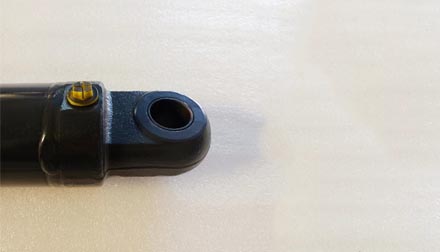Sep . 25, 2024 09:54 Back to list
Hydraulic Boom Cylinder Manufacturing Process and Quality Assurance Techniques
Understanding Hydraulic Boom Cylinder Manufacturing
Hydraulic boom cylinders play a crucial role in various industrial and construction applications, acting as the powerhouse behind lifting and moving heavy loads. These cylinders are vital components of machinery such as excavators, cranes, and loaders, where precision and reliability are paramount. The manufacturing of hydraulic boom cylinders involves intricate processes that ensure efficiency and durability, meeting the demands of heavy-duty operations.
The manufacturing journey of a hydraulic boom cylinder begins with the selection of high-quality raw materials. Steel is the primary material used due to its strength and resistance to deformation. The choice of material directly impacts the performance and longevity of the hydraulic cylinder, making it essential to source from reputable suppliers. Manufacturers often opt for alloy steels that provide enhanced tensile strength and improved wear resistance, contributing to the overall robustness of the final product.
Once the raw materials are acquired, the fabrication process commences. This includes cutting, machining, and shaping the components of the cylinder, such as the barrel, piston, and end caps. Advanced CNC machines are typically employed to ensure precision and uniformity in each piece. The machining process involves turning, milling, and sometimes welding, depending on the design specifications of each cylinder. Precision is critical; even minor deviations can lead to failures in performance.
hydraulic boom cylinder factory

After machining, the components undergo a thorough cleaning process to remove any contaminants that could affect the integrity of the hydraulic system. Following cleaning, surface treatments such as hard chroming or nitriding are applied to enhance corrosion resistance and wear characteristics. These treatments significantly increase the lifespan of the hydraulic cylinders under extreme conditions.
Assembly is the next crucial step. Skilled technicians meticulously assemble the machined components, ensuring that seals and fittings are correctly installed to prevent leaks and maintain pressure. After assembly, each hydraulic boom cylinder undergoes rigorous testing to verify its operational capability. Testing may include pressure testing, leak testing, and functional testing to ensure that the cylinder meets industry standards and specifications.
Finally, the finished hydraulic boom cylinders are packaged and distributed to customers worldwide
. Quality control is a continuous process throughout manufacturing, with regular inspections and tests at various stages to ensure that each product meets the highest standards of safety and performance.In conclusion, hydraulic boom cylinder manufacturing is a complex yet fascinating process that combines advanced technology with skilled craftsmanship. The commitment to quality and precision in each step of the manufacturing process ensures that these cylinders can effectively support heavy machinery, making them indispensable in the modern industrial landscape.
-
1.5 Ton Lifting Cylinder 70/82-40-290-535-Hebei Shenghan Hydraulic Machinery Co., Ltd.|Precision Manufacturing&Customization
NewsAug.13,2025
-
Heavy-Duty Snowplow Power Units for Optimal Performance
NewsAug.13,2025
-
1.5 Ton Lifting Cylinder-Hebei Shenghan|Precision Engineering&Durable Components
NewsAug.13,2025
-
1.5 Ton Lifting Cylinder 70/82-40-290-535-Hebei Shenghan|Hydraulic Solutions, Heavy-Duty Lifting
NewsAug.12,2025
-
1.5 Ton Lifting Cylinder-Hebei Shenghan Hydraulic Machinery Co. Ltd.|Precision Engineering&Heavy-Duty Applications
NewsAug.12,2025
-
1.5 Ton Lifting Cylinder 70/82-40-290-535 - Precision Hydraulic Lifting & Durable Industrial Cylinder
NewsAug.12,2025
